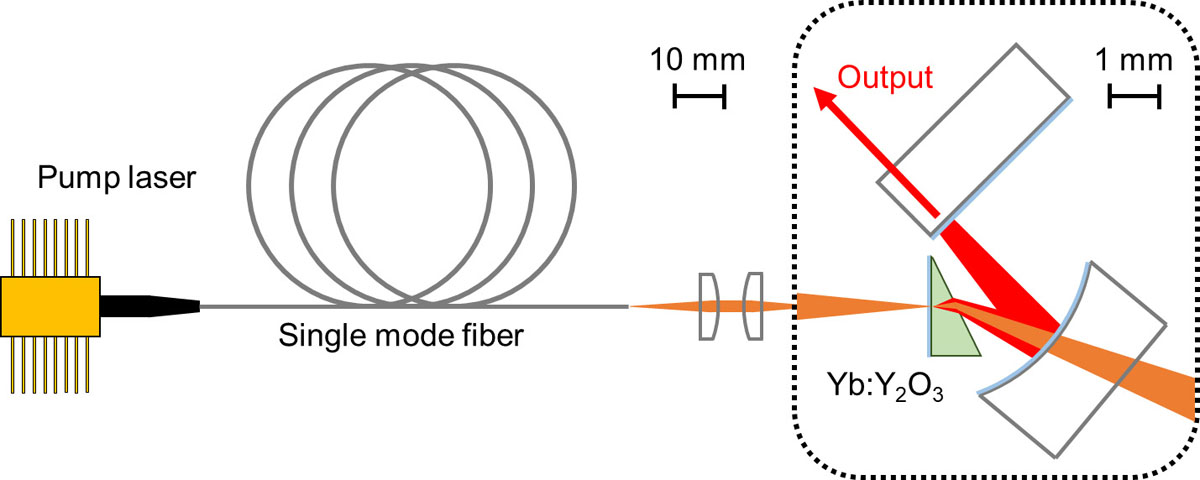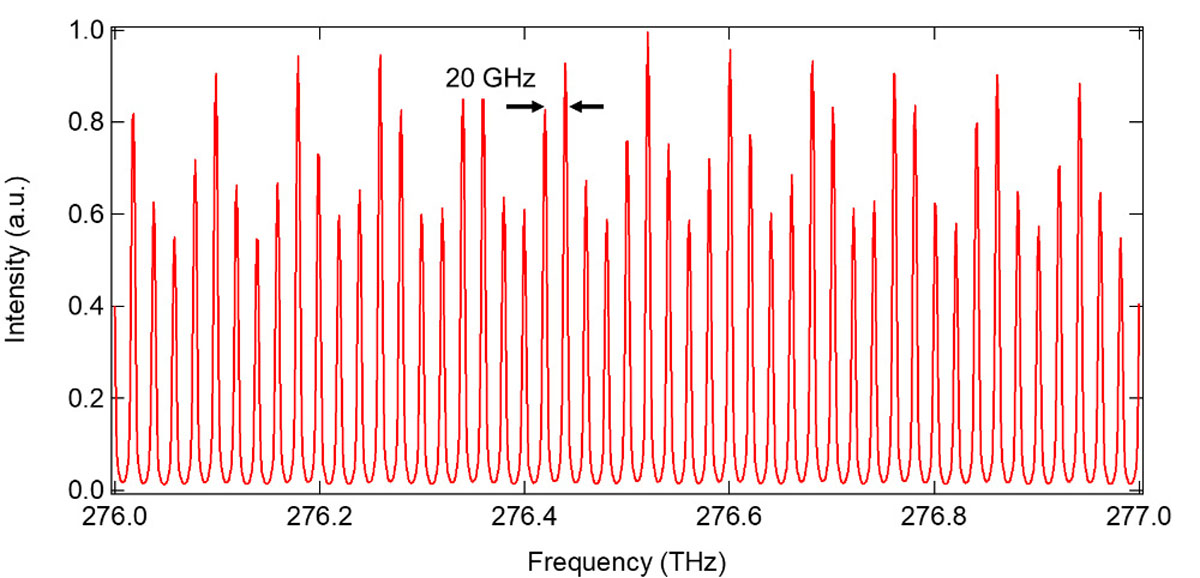Femtosecond Laser Pulse Generation with 20-GHz Repetition Rate
Kobayashi Group
Femtosecond laser pulses have widely used in the field of spectroscopy, metrology and material processing. Especially, material processing using the femtosecond laser has played an important role in the manufacturing because it does not induce thermal damages around the processing area, resulting in the high-quality micro-processing. One important laser parameter for these applications is a pulse repetition rate, which is typically in the range of 1 kHz to 100 MHz. Recent progress of the laser technologies has succeeded to generate femtosecond laser pulses with the gigahertz repetition rate. These high repetition rate pulses have performed efficient material processing compared with the low repetition rate laser pulses. Although the high repetition rate pulses are one candidate of the next-generation laser processing, mechanisms of the efficient material removal have not understood ever before. One reason is a lack of the multi-GHz femtosecond laser sources. Especially, material removal via laser pulses with the repetition rate above 10-GHz have not examined due to the difficulty of generating the multi-GHz laser pulses. We are interested in the generation of such kind of laser pulses.
Several methods have been used to generate multi-GHz repetition rate pulses. We focused on the Kerr-lens mode locked laser (KML), which provides the shortest pulse duration in the femtosecond lasers. The repetition rate of the KML is determined by the cavity length, with the relation of ƒ = c/L, where ƒ denotes the pulse repetition rate, c is the speed of the light and L is the cavity length. Therefore, the higher repetition rate is achieved with a shorter cavity length. To date, KML has realized up to 15 GHz repetition frequencies with a pulse duration of 150 fs. This repetition frequency corresponds to a cavity length of 20 mm. To increase the repetition rate above, the cavity length must be shorter than 20 mm. However, the cavity length is limited by the size of the optical element. In addition, typical KML is configured with 5 to 7 optical component, resulting in a large cavity
In this work [1], we developed the KML with the repletion rate above 20 GHz only using three optical components. This was achieved by designing new cavity geometry, which includes a triangle-cut laser gain medium and multi-functional dielectric coating. The detail cavity configuration is described in Figure 1. We use a gain medium of Yb:Y2O3 ceramic because an output light can be easily amplified by using a Yb-doped fiber amplifier. The pump source was an wavelength-stabilized laser diode coupled to a single mode fiber. One side of the gain medium was coated with a dichroic chirped mirror, while the other side was wedged at the Brewster angle. The concave mirror was dichroic-coated and its angle compensated an astigmatism that was introduced by the Brewster-cut gain medium. The plane mirror was high-reflection coated and was used as the output coupler.
Femtosecond pulse generation was achieved with the cavity length of 15 mm, which determines the pulse repetition rate as 20 GHz. A pulse duration was measured as 120 fs. The pulse repetition rate corresponds to the spacing of longitudinal cavity mode, which can be identified from the optical spectrum. Figure 2 shows a part of the optical spectrum. Each longitudinal mode is clearly observed because the mode spacing is wider than a spectrometer resolution of 4 GHz. To the best of our knowledge, the repetition rate of 20 GHz is the highest frequency in KMLs. Our results will enable the investigation of the material processing above the 10-GHz repetition rate.
References
- [1] S. Kimura, S. Tani, and Y. Kobayashi, Optica 6, 532 (2019).


